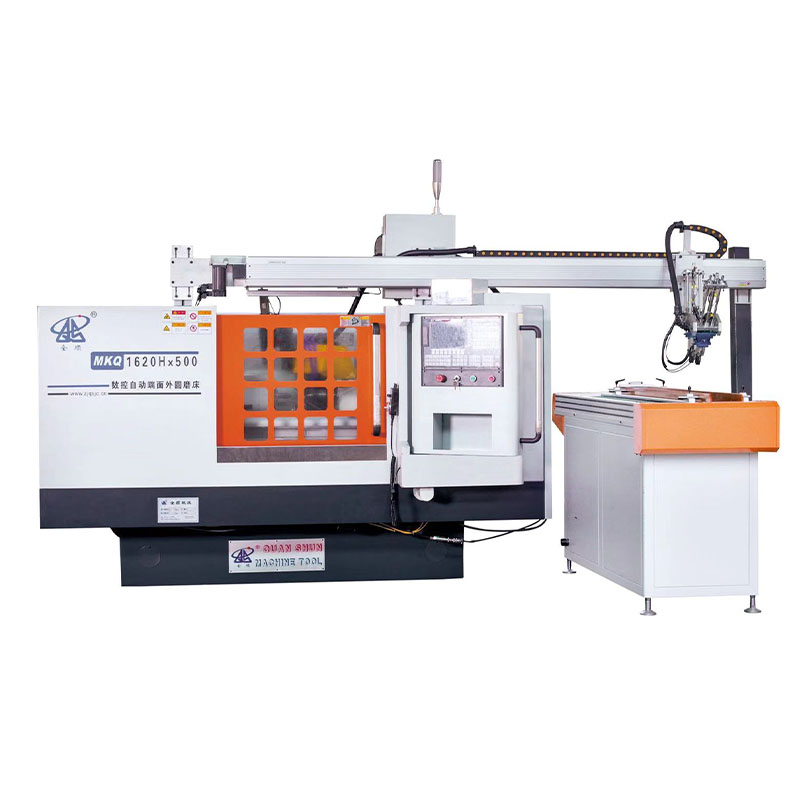1. What is mirror grinding The surface roughness of the […]
1. What is mirror grinding
The surface roughness of the workpiece after grinding is Ra<0.01µm, it is as mirror-like and can be imaged clearly, so it is called mirror grinding. The flatness of the grinding plane is not more than 3µm/1000mm. The surface processing of high-precision, high-value-added parts requires mirror grinding.
2. The grinder used for mirror grinding must have the following conditions
It has high precision, rigidity and vibration reduction measures; the rotation accuracy of the grinding wheel spindle is higher than 1μm; the amplitude of the grinding wheel carriage relative to the worktable is less than 1μm; the transverse feed mechanism can be accurately moved; the worktable has no creeping phenomenon when moving at low speeds .
3. The method of mirror grinding
1. Balancing and dressing the grinding wheel
(1) Balance grinding wheel. After the flange is installed on the grinding wheel, the rough static balance is performed first, and then the two end faces and outer circle are trimmed on the grinding wheel shaft, and finally the precise static balance is performed.
(2) Dressing the grinding wheel. The quality of the grinding wheel dressing directly affects the smoothness of the grinding surface. In order to reduce the surface roughness value, dressing the grinding wheel is the key. Pay attention to the following matters when dressing the grinding wheel:
1) The general fine grinding allowance is 0.015~0.02mm. When the workpiece is coarsely ground to Ra0.8, the fine grinding allowance is 0.005~0.015mm (the remaining grinding allowance must be determined according to the nature and hardness of the steel. The steel with high hardness and easy to be polished should have less grinding allowance), and then the grinding wheel needs to be refined.
2) When finishing the grinding wheel, first remove the thickness of about 0.1mm, then trim it twice with a depth of cut of 0.02mm, then trim three times with a depth of cut of 0.01mm, and finally reciprocate twice without the depth of cut. During finishing, the lateral feed speed is 20~30mm/min. For mild steel workpieces, it is better to slow the lateral feed when grinding the grinding wheel, and the opposite is true when processing hardened high-speed steel.
3) While dressing the grinding wheel, sufficient grinding fluid or other cooling fluid must be used to flush the contact point between the grinding wheel and the diamond knife to wash away the grinding wheel debris in time to avoid affecting the grinding quality.
4) The diamond knife used in finishing does not need to be very sharp, because the grain size of the grinding wheel is relatively coarse. The diameter of the diamond tip can be within 0.8mm. When trimming with a sharp diamond knife, the traverse feed speed must be slowed down.
5) When the newly-dressed grinding wheel is used, the surface roughness is slightly worse, and it will stabilize after a while.
2. Grinding amount
1) The amount of knife on the back of the grinding wheel is about 0.005 mm. Appropriate increase or decrease according to the nature and hardness of the workpiece steel. For example, hardened steel with high hardness can easily cause burns if the knife is too large, while the amount of soft steel is too small to be polished.
2) The single stroke of the horizontal feed is 0.2~0.4mm. The speed of the lateral feed has a greater influence on the surface roughness, because the grinding wheel for mirror grinding has poor cutting ability. If the lateral feed speed is increased, the surface of the grinding wheel will be damaged, so a very smooth surface cannot be obtained.
3) The longitudinal feed rate is 12~15 m/min. The longitudinal feed has a relatively small effect on the surface roughness, but if it is too slow, the surface of the workpiece will produce ripples or patterns.
4) No-cut deep polishing. Due to the poor cutting ability of the grinding wheel during mirror grinding, tool marks often appear on the surface of the workpiece (round workpieces are moon-shaped, rectangular workpieces are band-shaped), which reflect that the surface of the workpiece is not straight, so no-feed smooth grinding is required About two minutes.
www.china-quanshun.com
